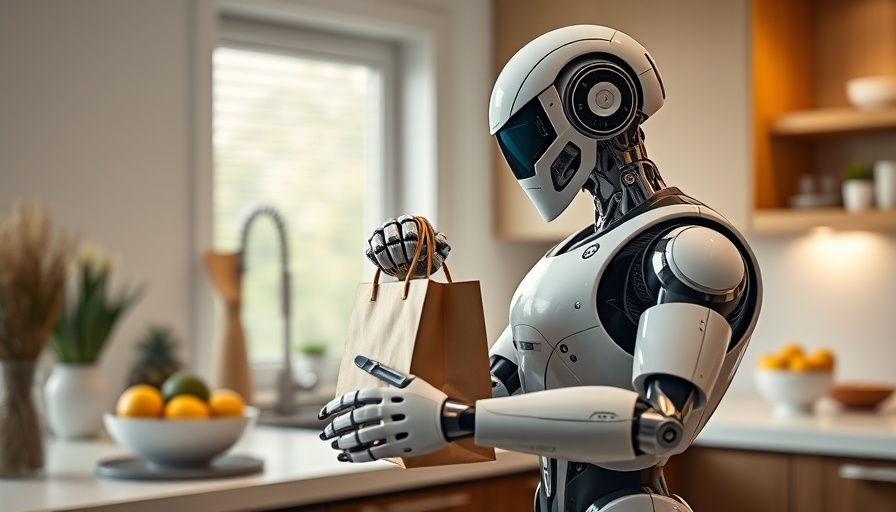
Could Your Voice Control the Future of Robots? Exploring Google's Breakthrough
Last week, Google unveiled its latest innovation, Gemini Robotics, set to revolutionize our interaction with machines by fusing artificial intelligence with robotics. This development promises a future where communicating with robots could become as simple as issuing a verbal command, potentially heralding a new era of automation in both domestic and industrial settings.
Understanding the Shift: From AI to Practical Robotics
Google's new initiative integrates large language models (LLM) into physical robots, allowing them to perform tasks based on natural language instructions. This fusion addresses longstanding hurdles in robotics, most notably the ability of robots to generalize actions across different contexts. As reported by MIT Technology Review, traditionally, robots excelled in environments they were trained for but struggled when faced with unfamiliar scenarios.
Why This Matters: The Business Implications of AI and Robotics
For executives and senior managers, the implications of Gemini Robotics extend well beyond technical innovations. As industrial sectors increasingly adopt AI-enabled solutions, understanding these advancements is crucial for strategizing competitive advantages. Companies like Figure AI, which plans to manufacture thousands of humanoid robots annually, are positioning themselves to meet the demand for automated personal and work assistants. The potential for cost savings, efficiency, and enhanced productivity in workplaces cannot be overstated; AI's integration into robotics is expected to expedite this transformation.
Benchmarking Progress: Key Examples from the Industry
Google's Gemini Robotics isn’t an isolated achievement; it reflects a broader trend of AI-enhanced robotics that other companies are also pursuing. For instance, Covariant, which built a robot capable of executing commands via images, text, or video, was quickly acquired by Amazon post-demonstration, highlighting a growing appetite for automation technology. As reported by Reuters, such advancements are already streamlining operations in sectors like logistics, where robots will soon be commonplace.
Future Insights: How Soon Will Robots Be Household Items?
Given the rapid development of these technologies, questions arise: how soon can we expect robots equipped with AI like Gemini to enter our homes and workplaces? The answer may lie in the continued refinement of AI models and the scaling of production capabilities, as suggested by Figure's manufacturing expectations. This convergence of robotics and AI indicates we may not be far from encountering intelligent machines equipped to handle various household tasks.
Preparing for a Robotic Future: What Leaders Should Consider
As the market moves towards the integration of robotic assistants, leaders in various industries must consider the implications of this technology. This includes understanding the safety and training required for robotic workers and the legal and ethical ramifications associated with human-robot interactions. Gartner predicts that organizations will increasingly turn to AI-driven technologies, like those from Google, not just to enhance productivity but to shape new operational models.
Final Insights: Embracing Change in a Technologically Advanced Era
The advancements in robotics demonstrated by Google and other tech firms illuminate a critical point for industry leaders: embracing this technological change is no longer optional. As robots become capable of understanding and executing verbal commands, their presence in workplaces and potentially homes will become inevitable. Now is the time to strategize on how to incorporate AI and automation into your organizational framework.
As we stand on the brink of this new robotic era, decision-makers have a crucial opportunity to capitalize on these trends. Engage with your teams and consider how integrating AI robotics could enhance operational efficiency and redefine productivity. The future beckons, and the question is not if, but when we will communicate with robots effectively and efficiently.
 Add Row
Add Row  Add
Add 




Write A Comment